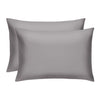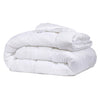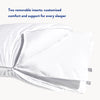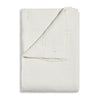The Daily Miracle
How To Get Mold out of Clothes
Published
December 21, 2023
Author
Bridget Reed

Pulling a long-forgotten shirt from the depths of your closet and finding it dotted with mold can be an unpleasant surprise. Yet, this common problem in many households doesn’t have to be a source of despair.
Mold in clothes is more than just an aesthetic issue. It can transform your cozy wardrobe into a source of annoyance. But the good news is, with the right approach, it's a completely solvable problem.
We'll walk you through understanding mold, preventing it, identifying it, and, most importantly, removing it. We're not just talking about quick fixes here; these are long-term solutions to keep your clothes fresh and clean year-round.
How Do Household Fabrics Get Moldy?
Mold is a common yet unwelcome guest in many homes, particularly in areas with high humidity or poor ventilation. Understanding mold is the first step toward combating it.
This sneaky intruder prefers damp, dark environments and can vary in color from black and green to white and orange. Its presence in your clothes can lead to a musty smell, which is often the first sign of a mold problem.
But why should we worry about mold? Well, it's not just about the unsightly spots it leaves.
Mold can actually degrade the fabric of your clothes over time, leading to damage and deterioration. That’s why understanding the causes of mold growth is crucial. Factors like storing damp clothes, poor ventilation in storage areas, or even a spill that wasn’t properly dried can all invite mold.
Now, let's talk about the fabrics themselves. Different materials react differently to mold. While natural fibers like cotton and linen are breathable, they can also be a breeding ground for mold if not cared for properly.
How Can I Prevent Mold in My Home?
Prevention is always better than cure, especially when it comes to mold. One key strategy is to ensure your clothes and linens are stored in a dry, well-ventilated space.
But that’s not all. How you wash your clothes plays a pivotal role in preventing mold. This is where our Miracle Made Laundry Detergent Sheets come in.
Keeping a regular washing schedule is essential in the fight against mold. Our detergent sheets make this task less daunting. They’re easy to use, efficient, and, most importantly, effective in keeping your clothes mold-free.
Let's not forget the role of proper drying. Whether you're air-drying your clothes or using a dryer, make sure they are completely dry before storing them.
Damp clothes are a mold magnet; even a little moisture can lead to a big problem. If your space is limited or you live in a humid area, consider using a dehumidifier in your laundry room or closet. Small steps like these can make a big difference in mold prevention.
How Do I Identify Mold Damage?
Identifying mold in your clothes is usually straightforward — those discolored patches and the musty odor are telltale signs. But once you spot mold, it’s important to assess the severity of the situation.
Is it a small patch that’s treatable at home, or has the mold deeply set into the fabric? If it’s the latter, you might need to consider professional cleaning services.
Recognizing the type of mold can also guide your cleaning strategy. Different molds respond to different treatments, so a little detective work can go a long way. For example, white mold tends to be easier to treat than deep-set black mold.
When examining mold, always wear gloves and a mask to protect yourself from spores. Once you’ve assessed the mold situation, isolate the affected garment. This prevents the mold from spreading to other clothes. It’s also a good idea to check nearby garments for any signs of mold, as it can spread quite easily.
A Step-by-Step Guide to Removing Mold
Dealing with mold doesn't have to be daunting. Firstly, gear up for safety with gloves and a mask — mold spores can be irritants.
Begin by brushing off any loose mold outside to avoid spreading spores inside your home. Then, it's time to choose your mold-fighting weapon. Natural remedies can be effective, especially for milder cases. Think vinegar, baking soda, or lemon juice.
For a deeper clean, our Miracle Made Laundry Detergent Sheets are your best bet. They're formulated for extra-strength cleaning, perfect for tackling those stubborn mold stains.
Before you throw your clothes in the wash, pre-treat the moldy area with a paste made from baking soda and water. Let it sit for a bit, then brush it off before washing.
Washing moldy clothes is a bit different from your regular laundry routine. You’ll want to use the hottest water setting that’s safe for the fabric. This is where our detergent sheets shine — they're designed to power through stains and mold even in hot water. Plus, they're gentle on your clothes and your skin, a win-win in our book.
After washing, check the clothes before drying. If the mold stain is still visible, repeat the washing process. Thoroughly drying your clothes is just as important as the washing part.
Mold loves moisture, so ensuring your clothes are completely dry is crucial. If possible, dry them in direct sunlight, as UV rays help kill any remaining mold spores.
In cases where mold has deeply penetrated the fabric, or if you're dealing with delicate materials, professional cleaning may be necessary. Don't hesitate to seek expert help — sometimes, it's the best course of action to save your favorite pieces.
Maintenance Tips for a Mold-Free Home
After tackling the mold, let's talk about keeping it at bay. Regular fabric care is key. Our detergent sheets simplify this process — they're easy to use, effective, and environmentally friendly. Plus, they leave your clothes smelling fresh and feeling clean.
When it comes to storage, your approach can make a huge difference in mold prevention. Ensure your clothes are stored in a dry environment with good air circulation.
Closets can become mold hotspots if not properly managed. Consider using silica gel packets in your drawers and closets to absorb excess moisture.
A squeaky bed may also be a subtle sign there might be excess moisture in your bedroom, which can contribute to mold growth on clothes and linens. Addressing these small issues can have a big impact on maintaining a mold-free environment.
Choosing the Right Fabrics
Incorporating our Miracle Made® towels and linens into your household can significantly reduce the presence of mold, thanks to the power of antimicrobial silver. These products are not just about luxury and comfort but are scientifically designed to combat bacteria and mold growth.
Silver has long been recognized for its antibacterial properties. When infused into fabrics like those used in our Miracle Made® sheets and towels, it works through a process known as ionization.
Silver ions released from the fabric actively target and neutralize bacteria, keeping them from multiplying and leading to mold formation. This natural action keeps your linens fresher and cleaner for longer periods, reducing the frequency of laundry and, consequently, the likelihood of mold growth.
The Bottom Line
In conclusion, mold in household fabrics is a challenge, but it's one that can be overcome with the right approach and products. Following the steps outlined in this guide and incorporating the right products into your routine will have you well on your way to a mold-free home.
Tackling mold is about more than just cleaning; it's about creating a healthier, more comfortable living space. Our products are designed to make your home care routine as effective and eco-friendly as possible.
So here's to a fresher, brighter, and mold-free home, all thanks to a little help from your friends here at Miracle Brand.
Sources:
Laundry Basics | Cleaning Institute
Antibacterial Silver | National Library of Medicine
How to Prevent and Remove Mildew — Home Methods | University of Missouri Extension


























